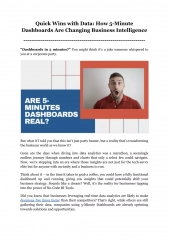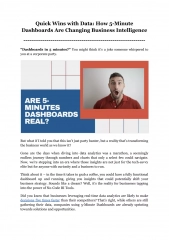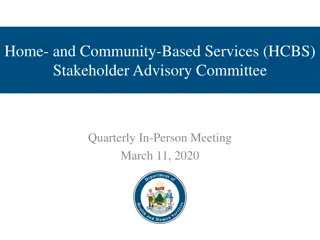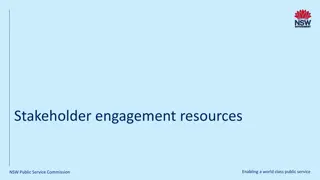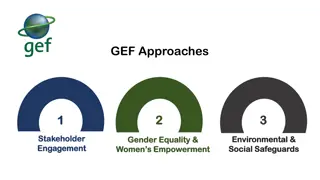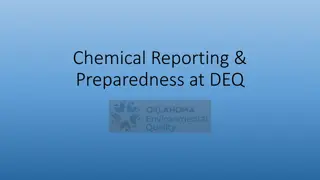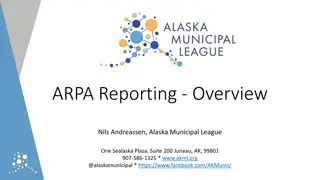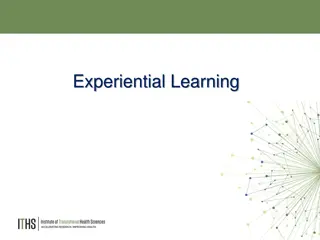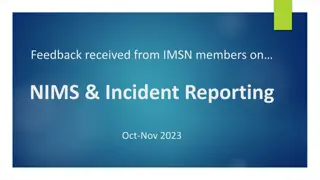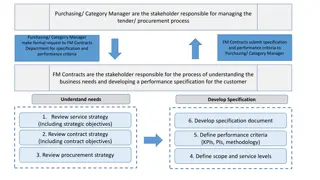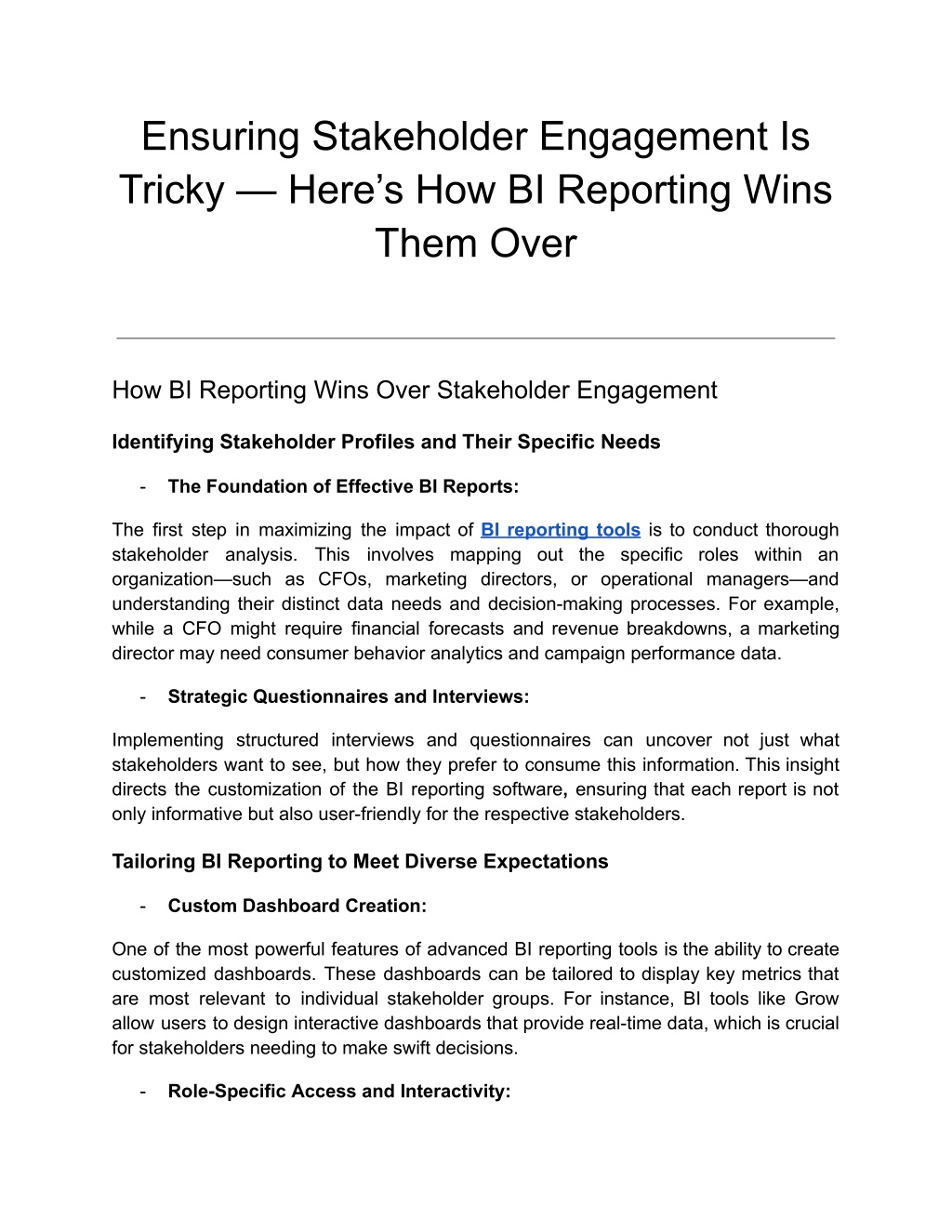
Ensuring Stakeholder Engagement Is Tricky — Here’s How BI Reporting Wins Them Over
Moving through the complexities of stakeholder engagement is a challenge only a few are prepared for. This blog explores how leveraging Business Intelligence (BI) reporting can transform this challenge into a strategic advantage. Discover the crucial
Download Presentation

Please find below an Image/Link to download the presentation.
The content on the website is provided AS IS for your information and personal use only. It may not be sold, licensed, or shared on other websites without obtaining consent from the author. Download presentation by click this link. If you encounter any issues during the download, it is possible that the publisher has removed the file from their server.
E N D
Presentation Transcript
Ensuring Stakeholder Engagement Is Tricky Here s How BI Reporting Wins Them Over How BI Reporting Wins Over Stakeholder Engagement Identifying Stakeholder Profiles and Their Specific Needs - The Foundation of Effective BI Reports: The first step in maximizing the impact of BI reporting tools is to conduct thorough stakeholder analysis. This involves mapping out the specific roles within an organization such as CFOs, marketing directors, or operational managers and understanding their distinct data needs and decision-making processes. For example, while a CFO might require financial forecasts and revenue breakdowns, a marketing director may need consumer behavior analytics and campaign performance data. - Strategic Questionnaires and Interviews: Implementing structured interviews and questionnaires can uncover not just what stakeholders want to see, but how they prefer to consume this information. This insight directs the customization of the BI reporting software, ensuring that each report is not only informative but also user-friendly for the respective stakeholders. Tailoring BI Reporting to Meet Diverse Expectations - Custom Dashboard Creation: One of the most powerful features of advanced BI reporting tools is the ability to create customized dashboards. These dashboards can be tailored to display key metrics that are most relevant to individual stakeholder groups. For instance, BI tools like Grow allow users to design interactive dashboards that provide real-time data, which is crucial for stakeholders needing to make swift decisions. - Role-Specific Access and Interactivity:
Its also beneficial to configure the BI reporting software with role-specific access controls. This ensures that stakeholders view only the data that's relevant to their functions, which enhances data security and simplifies the user experience. Moreover, incorporating interactivity such as drill-down features that allow users to delve deeper into the metrics empowers stakeholders to explore their data on a granular level, fostering a deeper understanding and engagement with the information presented. Feedback Integration: Tailoring stakeholders should be encouraged and integrated into the BI system. This iterative process helps in refining the BI reports and dashboards to better meet the evolving needs of the users, ensuring that the Business Intelligence reporting tool remains an invaluable asset over time. BI reports isn't a set-it-and-forget-it task. Continuous feedback from Regular Updates and Adaptations: As business dynamics shift, so do stakeholder needs. Regular updates to the BI reporting software and its configurations to reflect these changes are crucial. This not only keeps the reports relevant but also reassures stakeholders of the commitment to meet their evolving business needs. Transparency Reporting Through Effective Data Visualization in BI Data visualization in BI reports serves a critical function it breaks down complex information into digestible, easily comprehensible visual representations. This is essential in decision-making processes, especially when stakeholders need to grasp complicated datasets quickly to make timely decisions. Effective visualization helps in highlighting trends, comparing figures, and summarizing data in a way that written reports simply cannot match. Enhancing Cognitive Recall: Visual data representations facilitated by BI reporting tools cater to the human brain s wired preference for images over text. This cognitive bias can be leveraged through BI reporting software to enhance stakeholder engagement and recall of key business metrics. Examples of Effective Visualizations in BI Reporting Interactive Dashboards: Dashboards are arguably the most impactful visualization tool available in BI reporting software. They provide a real-time overview of an organization s key performance indicators (KPIs), allowing stakeholders to monitor
business health at a glance. Tools like Grow enable customization of dashboards to include interactive elements such as hover effects, clickable items, and drill-down capabilities, which allow stakeholders to explore data layers in depth without overwhelming complexity. Real-Time Data Feeds: Another powerful visualization feature is real-time data feeds. These are crucial for roles that require on-the-spot decision-making. For instance, operational managers benefit greatly from real-time feeds displaying production metrics, which can help them address issues instantly before they escalate. Similarly, sales managers can monitor live data from BI reports to adjust strategies during critical promotion periods. Geospatial Maps: For businesses operating over diverse geographical locations, geospatial maps can be invaluable. These maps help visualize data according to physical locations, making it easier for stakeholders to analyze market penetration, regional performance, and logistics data. Any Business Intelligence reporting tool that offers advanced mapping capabilities can provide deeper insights into market trends and demographic information, supporting more targeted decision-making.
Gantt Charts for Project Management: In contexts where time management and project progress are crucial, Gantt charts provided by BI reporting software can be extremely useful. These charts offer a timeline-based view of project statuses, helping project managers and their teams keep track of deadlines, upcoming milestones, and task dependencies. Customizable and Interactive Reports Customizable and interactive reports are vital in the landscape of business intelligence (BI). They empower stakeholders by allowing them to tailor BI reports to their specific needs, enhancing both the usability and relevance of the data presented. Such capabilities are crucial for fostering an engaged and informed decision-making process across all levels of an organization. Below, we explore the advantages of these features in BI reporting tools and discuss accessible tools that facilitate customization without requiring users to possess extensive technical skills. Enhanced Relevance and Context: Customizable reports enable stakeholders to focus on the data that matters most to their specific roles and responsibilities. This personalization makes the data more relevant and easier to understand, which in turn, increases the likelihood of stakeholders making informed decisions based on the BI reports generated. Increased Engagement and Ownership: When stakeholders can interact with BI reporting tools and adjust them to suit their needs, their engagement with the tools increases. This ownership leads to more frequent use of the BI system, fostering a data-driven culture within the organization. Flexibility in Data Exploration: Interactive BI reports allow users to explore data beyond static figures. They can drill down into metrics, apply filters, and change parameters to uncover deeper insights. This level of interaction is not only empowering but also crucial for complex problem-solving where multiple data layers need to be understood in conjunction.
Tools Enabling Customization Without Extensive Tech Skills 1. Drag-and-Drop Interfaces: Many modern BI reporting software options offer drag-and-drop capabilities that simplify the creation and customization of reports. This user-friendly feature allows stakeholders to easily select, position, and modify components such as charts, graphs, and tables, creating custom views without any coding knowledge. Grow s BI tool exemplifies this with its intuitive interface that lets users build and adjust dashboards on the fly. It's designed for business users, data analysts, and BI professionals who need quick modifications to their reports. 2. Pre-built Templates: Another advantageous feature of advanced BI reporting tools is the availability of pre-built templates. These templates provide a starting point for customization, reducing the initial effort and expertise required to create useful reports. Grow offers a range of customizable dashboard templates that cater to different business needs and sectors, enabling quick setup and deployment of tailored reports. 3. Conditional Formatting and Alerts: Conditional formatting features allow users to set specific criteria that automatically adjust the visualization elements, such as changing colors when certain thresholds are met. This not only makes the reports more interactive but also helps in highlighting critical metrics at a glance. 4. Integrated Query Builders: For stakeholders who need to generate specific datasets, integrated query builders within BI reporting tools can be a game-changer. These builders often use natural language processing or simple GUI-based selectors to create complex queries without the need for SQL knowledge. Integrating Predictive Analytics in BI Reporting Predictive analytics is transforming how organizations plan for the future, allowing them to anticipate trends and prepare for potential challenges proactively. By integrating predictive elements into Business Intelligence (BI) reports, stakeholders can access foresights that inform strategic decisions, mitigate risks, and capitalize on upcoming opportunities. The Strategic Advantage of Predictive Insights in BI Reporting Anticipating Market Trends: Predictive analytics uses historical data and advanced algorithms to forecast future events and market conditions. This capability within BI reporting tools allows businesses to stay ahead of industry curves, adjusting their
strategies to align with anticipated changes. For instance, retailers can use predictive models to forecast seasonal demand, adjusting inventory and marketing strategies accordingly. Mitigating organizations can formulate contingency plans, thus reducing the potential impact of those risks. Predictive analytics in BI reporting software provides early warnings about factors such as customer churn, potential financial discrepancies, or operational failures, enabling preemptive action. Risks: By identifying potential risks before they become evident, Optimizing Operations: Predictive insights can also streamline operational efficiency by predicting outcomes of different operational scenarios. This helps in resource allocation, workforce management, and maintenance scheduling, ensuring that the operations are optimized for expected conditions. Automated Alerts and Notifications Automated alerts in BI reporting tools serve as an early warning system for businesses. They provide immediate notifications about critical metrics that require attention, ensuring that stakeholders are always aware of important changes in data. For instance, a sudden drop in sales, an unexpected expenditure spike, or deviation from projected financial pathways triggers immediate alerts, enabling quick response to potentially critical business events. Modern BI reporting software often incorporates advanced analytics capabilities, including anomaly detection. These systems are designed to identify outliers or unusual patterns that might indicate errors, fraud, or other significant issues. Automated alerts ensure that these findings do not go unnoticed and that appropriate stakeholders can take corrective actions promptly. Different stakeholders may have different needs and thresholds for information. Customizing alerts so that they are relevant to the specific roles and responsibilities of each stakeholder can enhance engagement and ensure that alerts are acted upon. BI reporting tools like Grow allow for this level of customization, ensuring that notifications are both relevant and timely. Conclusion Navigating the complexities of stakeholder engagement can indeed be a challenging endeavor, yet with the right tools and strategies, it is not just manageable but highly
rewarding. The integration of cutting-edge BI reporting solutions, such as those offered by Grow, can transform stakeholder interactions from passive receptions of data to active, insightful engagements. Grow s Business Intelligence reporting tool provides a robust platform for delivering customized, real-time insights that meet the diverse needs of stakeholders across any organization. With features designed to enhance data visualization, enable real-time decision-making, and support customizable reporting, Grow ensures that every stakeholder has the information they need at their fingertips. This empowers them not only to understand the data but to act upon it proactively, enhancing both individual and organizational performance. To truly appreciate how Grow can revolutionize your approach to stakeholder engagement, consider exploring the platform firsthand. Sign up for a 14-day free trial and experience the difference advanced BI tools can make. Furthermore, don t just take our word for it; see what other users are saying by visiting "Grow.com Reviews & Ratings 2024 TrustRadius" to read firsthand accounts of how Grow is transforming businesses through superior data insights and stakeholder communication. Embrace the future of business intelligence with Grow, and turn the tricky task of stakeholder engagement into your strategic advantage.

